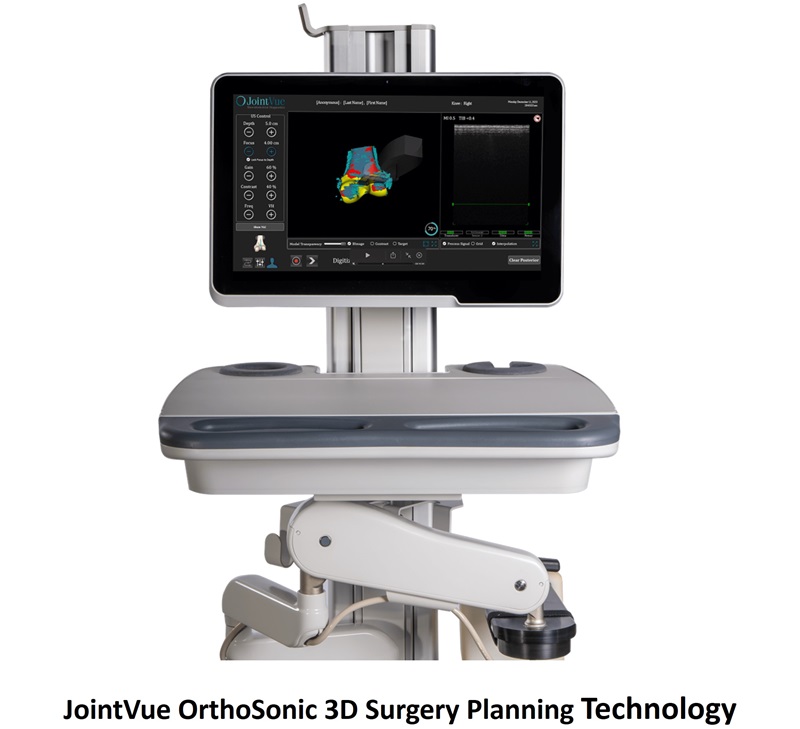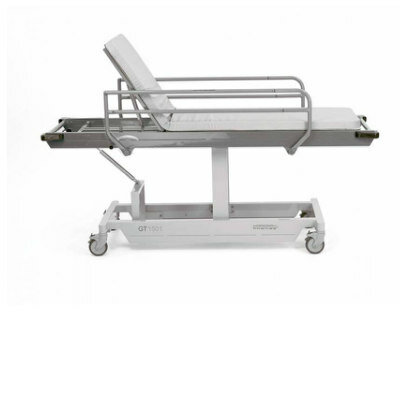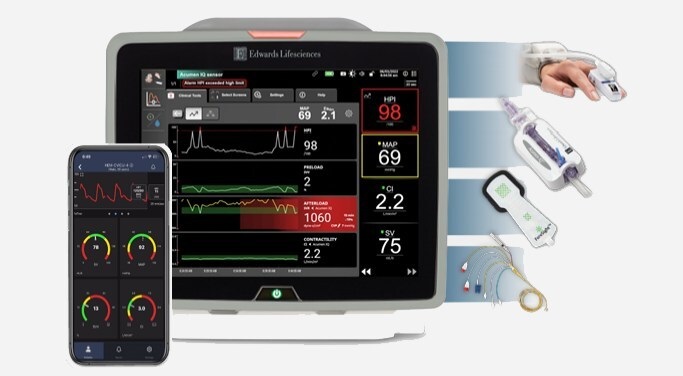Printable POC SARS-CoV-2 Antibody Test for COVID-19 Could Produce Results in Real Time
|
By HospiMedica International staff writers Posted on 01 Dec 2020 |
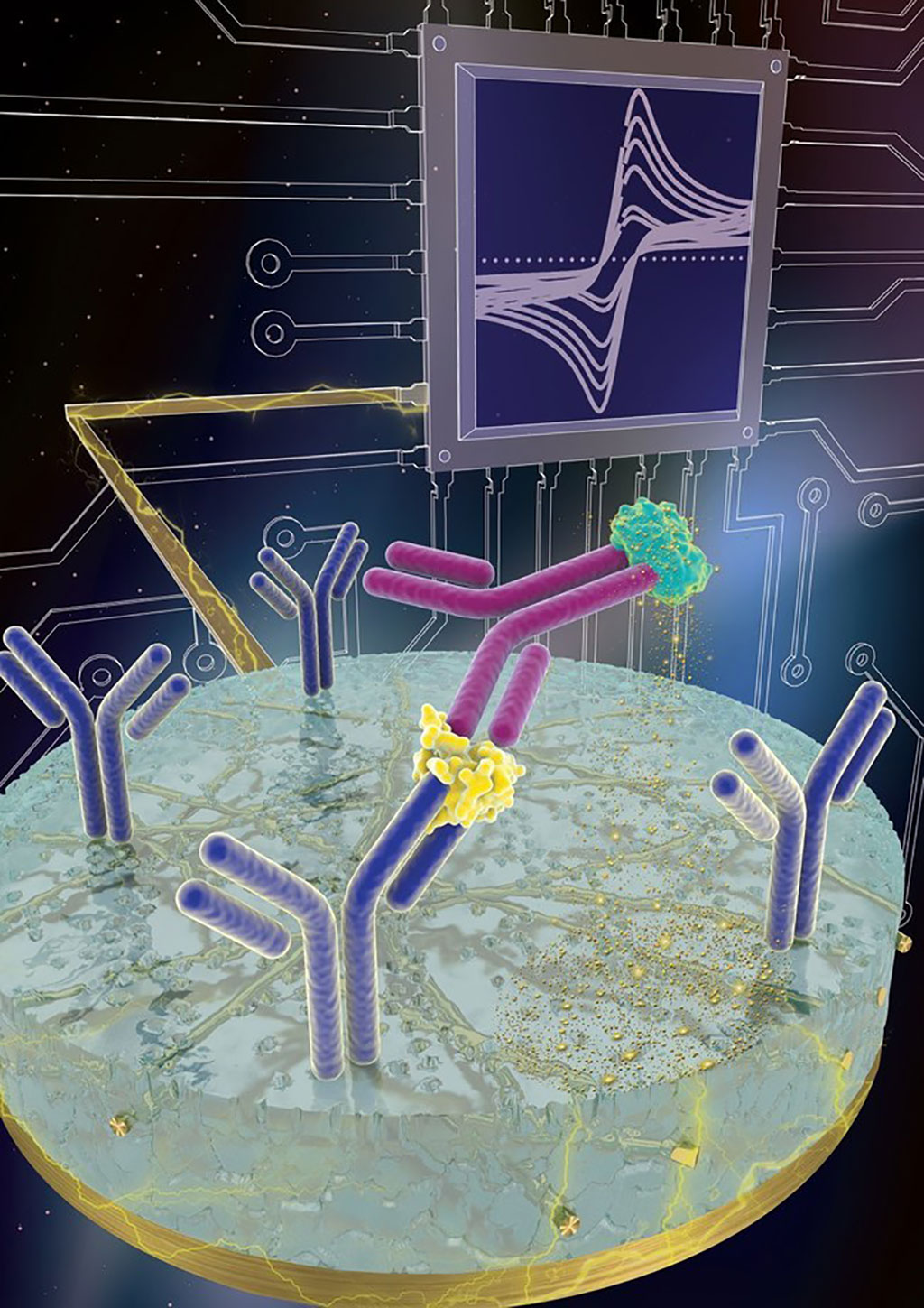
Image: Printable POC SARS-CoV-2 Antibody Test for COVID-19 Could Produce Results in Real Time (Photo courtesy of Wyss Institute at Harvard University)
A low-cost electrochemical technology for multiplexed biomarker detection could facilitate global serological testing for SARS-CoV-2 infections, and help trace immunity in individuals over time.
The Wyss Institute for Biologically Inspired Engineering at Harvard University (Boston, MA, USA) has licensed its eRapid technology to The iQ Group Global (Sydney, Australia) for COVID-19 diagnostic applications.
The eRapid technology is a low-cost, affinity-based electrochemical sensing platform that can multiplex simultaneous detection and quantification of a broad range of biomarkers, including proteins, antibodies, RNA, and small molecules with high sensitivity and selectivity in small quantities of complex biological fluids, such as blood or saliva. The eRapid technology is based on a novel, antifouling nanocomposite coating to which SARS-CoV-2-specific antibodies are attached that capture viral proteins or RNA, or antibodies produced by infected individuals in response to the virus. Upon chemically detecting any one of these virus-specific molecules, the eRapid platform generates an electrical signal, and the strength of that signal correlates directly with the levels of target molecules present in the sample. The antifouling coating enables eRapid technology to provide low cost electrochemical sensors with higher sensitivity and specificity, while the multiplexed nature of the devices allows them to validate diagnosis by quantifying the levels of multiple different viral components and host response molecules. As the coating also allows these devices to be re-used multiple times with consistent specificity and sensitivity, the costs of diagnostic assays can be reduced even further.
The iQ Group Global will integrate the Wyss' eRapid technology with its biosensor platform. A key component of the platform is the company's proprietary Organic Thin Film Transistor technology, which is able to significantly enhance electrical signals such as the ones generated by eRapid, and allow them to be read out in a smart device to provide diagnostic answers in real time. The idea is to coat the sensors designed to detect IgM and/or IgG antibodies, which indicate a person’s current or previous exposure to the SARS-CoV-2 virus and, thus, a potential infection with COVID-19. This could lead to the creation of a chewing-gum-sized diagnostic ‘strip’ that can be used for COVID-19 testing at point of care, with the ability to be printed at scale at a low cost, and produce real-time results.
"Our eRapid technology offers the possibility of developing inexpensive diagnostic tests that have the potential to accurately determine the presence of infection, the stage of the infection, and the patient's response to the virus all simultaneously," said the Wyss' Founding Director Donald Ingber, M.D., Ph.D.
"eRapid's features and capabilities would make it an effective tool for easily tracing active immunity in infected individuals and those that recovered from COVID-19 to help determine their basis for resistance. Such a versatile platform that helps us better understand how the disease develops, persists, and can be controlled could be an invaluable asset in the fight against the pandemic," said Wyss Senior Staff Scientist Pawan Jolly, Ph.D.
"Non-invasive, low cost and scalable SARS-Cov-2 antibody testing is urgently needed to estimate the incidence and prevalence of SARS-Cov-2 infection at the general population level. We intend to focus on placing this SARS-Cov 2-test as a potential companion diagnostic to the vaccination programs globally. Given the analytical characteristics of the biosensor and its stage of development, the combined technologies position us excellently to develop a more accurate, sensitive and real-time SARS-CoV-2 test for diagnostic, point-of-care testing, and pre-vaccination screening to meet this urgent global need," said Dr. George Syrmalis, Group CEO of The iQ Group Global.
Related Links:
Wyss Institute for Biologically Inspired Engineering at Harvard University
The iQ Group Global
The Wyss Institute for Biologically Inspired Engineering at Harvard University (Boston, MA, USA) has licensed its eRapid technology to The iQ Group Global (Sydney, Australia) for COVID-19 diagnostic applications.
The eRapid technology is a low-cost, affinity-based electrochemical sensing platform that can multiplex simultaneous detection and quantification of a broad range of biomarkers, including proteins, antibodies, RNA, and small molecules with high sensitivity and selectivity in small quantities of complex biological fluids, such as blood or saliva. The eRapid technology is based on a novel, antifouling nanocomposite coating to which SARS-CoV-2-specific antibodies are attached that capture viral proteins or RNA, or antibodies produced by infected individuals in response to the virus. Upon chemically detecting any one of these virus-specific molecules, the eRapid platform generates an electrical signal, and the strength of that signal correlates directly with the levels of target molecules present in the sample. The antifouling coating enables eRapid technology to provide low cost electrochemical sensors with higher sensitivity and specificity, while the multiplexed nature of the devices allows them to validate diagnosis by quantifying the levels of multiple different viral components and host response molecules. As the coating also allows these devices to be re-used multiple times with consistent specificity and sensitivity, the costs of diagnostic assays can be reduced even further.
The iQ Group Global will integrate the Wyss' eRapid technology with its biosensor platform. A key component of the platform is the company's proprietary Organic Thin Film Transistor technology, which is able to significantly enhance electrical signals such as the ones generated by eRapid, and allow them to be read out in a smart device to provide diagnostic answers in real time. The idea is to coat the sensors designed to detect IgM and/or IgG antibodies, which indicate a person’s current or previous exposure to the SARS-CoV-2 virus and, thus, a potential infection with COVID-19. This could lead to the creation of a chewing-gum-sized diagnostic ‘strip’ that can be used for COVID-19 testing at point of care, with the ability to be printed at scale at a low cost, and produce real-time results.
"Our eRapid technology offers the possibility of developing inexpensive diagnostic tests that have the potential to accurately determine the presence of infection, the stage of the infection, and the patient's response to the virus all simultaneously," said the Wyss' Founding Director Donald Ingber, M.D., Ph.D.
"eRapid's features and capabilities would make it an effective tool for easily tracing active immunity in infected individuals and those that recovered from COVID-19 to help determine their basis for resistance. Such a versatile platform that helps us better understand how the disease develops, persists, and can be controlled could be an invaluable asset in the fight against the pandemic," said Wyss Senior Staff Scientist Pawan Jolly, Ph.D.
"Non-invasive, low cost and scalable SARS-Cov-2 antibody testing is urgently needed to estimate the incidence and prevalence of SARS-Cov-2 infection at the general population level. We intend to focus on placing this SARS-Cov 2-test as a potential companion diagnostic to the vaccination programs globally. Given the analytical characteristics of the biosensor and its stage of development, the combined technologies position us excellently to develop a more accurate, sensitive and real-time SARS-CoV-2 test for diagnostic, point-of-care testing, and pre-vaccination screening to meet this urgent global need," said Dr. George Syrmalis, Group CEO of The iQ Group Global.
Related Links:
Wyss Institute for Biologically Inspired Engineering at Harvard University
The iQ Group Global
Latest COVID-19 News
- Low-Cost System Detects SARS-CoV-2 Virus in Hospital Air Using High-Tech Bubbles
- World's First Inhalable COVID-19 Vaccine Approved in China
- COVID-19 Vaccine Patch Fights SARS-CoV-2 Variants Better than Needles
- Blood Viscosity Testing Can Predict Risk of Death in Hospitalized COVID-19 Patients
- ‘Covid Computer’ Uses AI to Detect COVID-19 from Chest CT Scans
- MRI Lung-Imaging Technique Shows Cause of Long-COVID Symptoms
- Chest CT Scans of COVID-19 Patients Could Help Distinguish Between SARS-CoV-2 Variants
- Specialized MRI Detects Lung Abnormalities in Non-Hospitalized Long COVID Patients
- AI Algorithm Identifies Hospitalized Patients at Highest Risk of Dying From COVID-19
- Sweat Sensor Detects Key Biomarkers That Provide Early Warning of COVID-19 and Flu
- Study Assesses Impact of COVID-19 on Ventilation/Perfusion Scintigraphy
- CT Imaging Study Finds Vaccination Reduces Risk of COVID-19 Associated Pulmonary Embolism
- Third Day in Hospital a ‘Tipping Point’ in Severity of COVID-19 Pneumonia
- Longer Interval Between COVID-19 Vaccines Generates Up to Nine Times as Many Antibodies
- AI Model for Monitoring COVID-19 Predicts Mortality Within First 30 Days of Admission
- AI Predicts COVID Prognosis at Near-Expert Level Based Off CT Scans
Channels
Critical Care
view channel_1.jpg)
Cutting-Edge Bioelectronic Device Offers Drug-Free Approach to Managing Bacterial Infections
Antibiotic-resistant infections pose an increasing threat to patient safety and healthcare systems worldwide. Recent estimates indicate that drug-resistant infections may rise by 70% by 2050, highlighting... Read more
Sophisticated Machine-Learning Approach Uses Patient EHRs to Predict Pneumonia Outcomes
Pneumonia, an infection that results in difficulty breathing due to fluid accumulation in the lungs, is one of the leading causes of death worldwide. This condition is particularly challenging to treat... Read more
Early TAVR Benefits Patients with Asymptomatic Severe Aortic Stenosis
For patients with asymptomatic severe aortic stenosis (AS) and preserved left-ventricular ejection fraction, current guidelines recommend clinical surveillance every six to twelve months.... Read more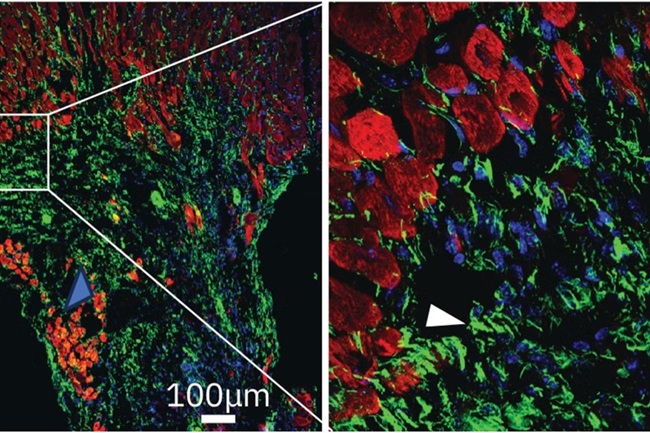
First-Of-Its-Kind Experimental Therapy Enhances Tissue Repair After Heart Attack
Cardiovascular disease remains the leading cause of death worldwide, accounting for one-third of all annual fatalities. Following a heart attack, the heart's natural regenerative ability is limited, resulting... Read moreSurgical Techniques
view channel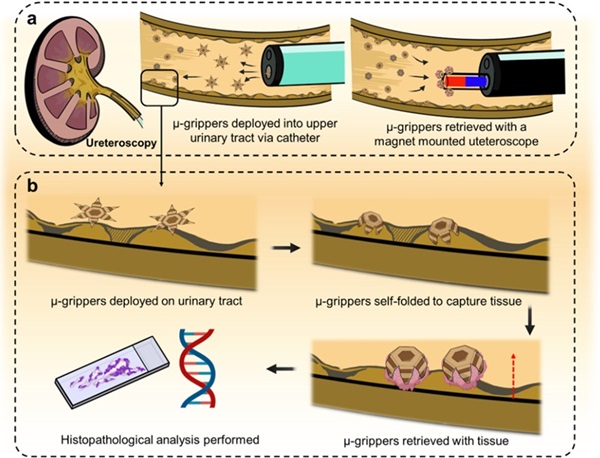
Microgrippers For Miniature Biopsies to Create New Cancer Diagnostic Screening Paradigm
The standard diagnosis of upper urinary tract cancers typically involves the removal of suspicious tissue using forceps, a procedure that is technically challenging and samples only a single region of the organ.... Read moreMiniature Soft Lithium-Ion Battery Could Be Used as Defibrillator During Surgery
The development of tiny smart devices, measuring just a few cubic millimeters, requires equally miniature power sources. For minimally invasive biomedical devices that interact with biological tissues,... Read more.jpg)
TAVI Procedure Supported by Radial Artery Access Reduces Bleeding Complications
The TAVI procedure, or Transcatheter Aortic Valve Implantation, is a minimally invasive technique in which a new aortic valve is inserted through a femoral artery to replace a narrowed old valve.... Read more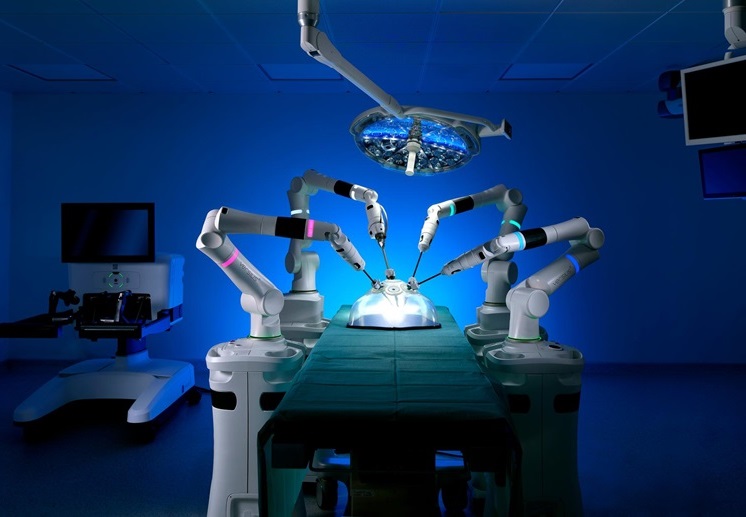
Portable Surgical Robot Seamlessly Integrates into Any OR for Performing Cholecystectomy Procedures
The United States represents a significant market with a strong demand for a flexible surgical robotic system applicable across various care settings. However, there has been a lack of sufficient options... Read morePatient Care
view channel
Portable Biosensor Platform to Reduce Hospital-Acquired Infections
Approximately 4 million patients in the European Union acquire healthcare-associated infections (HAIs) or nosocomial infections each year, with around 37,000 deaths directly resulting from these infections,... Read moreFirst-Of-Its-Kind Portable Germicidal Light Technology Disinfects High-Touch Clinical Surfaces in Seconds
Reducing healthcare-acquired infections (HAIs) remains a pressing issue within global healthcare systems. In the United States alone, 1.7 million patients contract HAIs annually, leading to approximately... Read more
Surgical Capacity Optimization Solution Helps Hospitals Boost OR Utilization
An innovative solution has the capability to transform surgical capacity utilization by targeting the root cause of surgical block time inefficiencies. Fujitsu Limited’s (Tokyo, Japan) Surgical Capacity... Read more
Game-Changing Innovation in Surgical Instrument Sterilization Significantly Improves OR Throughput
A groundbreaking innovation enables hospitals to significantly improve instrument processing time and throughput in operating rooms (ORs) and sterile processing departments. Turbett Surgical, Inc.... Read moreHealth IT
view channel
Machine Learning Model Improves Mortality Risk Prediction for Cardiac Surgery Patients
Machine learning algorithms have been deployed to create predictive models in various medical fields, with some demonstrating improved outcomes compared to their standard-of-care counterparts.... Read more
Strategic Collaboration to Develop and Integrate Generative AI into Healthcare
Top industry experts have underscored the immediate requirement for healthcare systems and hospitals to respond to severe cost and margin pressures. Close to half of U.S. hospitals ended 2022 in the red... Read more
AI-Enabled Operating Rooms Solution Helps Hospitals Maximize Utilization and Unlock Capacity
For healthcare organizations, optimizing operating room (OR) utilization during prime time hours is a complex challenge. Surgeons and clinics face difficulties in finding available slots for booking cases,... Read more
AI Predicts Pancreatic Cancer Three Years before Diagnosis from Patients’ Medical Records
Screening for common cancers like breast, cervix, and prostate cancer relies on relatively simple and highly effective techniques, such as mammograms, Pap smears, and blood tests. These methods have revolutionized... Read morePoint of Care
view channel
Handheld, Sound-Based Diagnostic System Delivers Bedside Blood Test Results in An Hour
Patients who go to a doctor for a blood test often have to contend with a needle and syringe, followed by a long wait—sometimes hours or even days—for lab results. Scientists have been working hard to... Read more
Smartphone-Enabled, Paper-Based Quantitative Diagnostic Platform Transforms POC Testing
Point-of-care diagnostics are crucial for public health, offering rapid, on-site testing that enables prompt diagnosis and treatment. This is especially valuable in remote or underserved regions where... Read moreBusiness
view channel
Hologic Acquires Gynesonics to Strengthen Existing Gynecological Surgical Business
Hologic (Marlborough, MA, USA) has signed a definitive agreement to acquire Gynesonics (Redwood City, CA, USA) for approximately USD 350 million, subject to working capital and other customary closing adjustments.... Read more